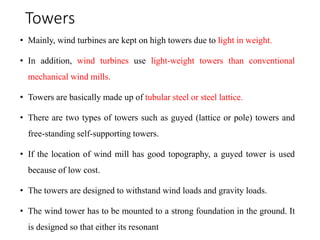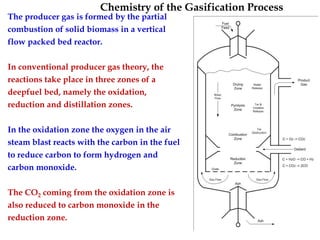The document discusses wind energy and wind turbines. It covers the basics of how wind energy works, the components of wind turbines including the rotor, nacelle, generator and tower. It also discusses wind speed and the factors that determine wind energy potential at a site. The maximum efficiency of wind turbines, known as the Betz limit, is introduced. Applications of wind energy and the advantages and disadvantages are summarized.
























































































































































